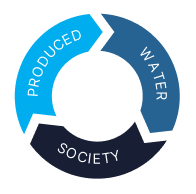| First name |
Wajid |
| Last name |
Ali |
| Email |
wajid@ualberta.ca |
| Country |
CA |
| Degree pursued |
PhD |
| Year enrolled |
2023 |
| Year of anticipated graduation |
2026 |
| Gpa |
3.4 |
| Enrollment status |
Graduate |
| Willing for presentation |
yes |
| Educational institution name |
University of Alberta |
| Address line 1 |
116 St & 85 Ave, Edmonton, AB T6G 2R3 |
| City |
Edmonton |
| State |
CA-AB |
| Zip |
T6G 2R3 |
| Country |
CA |
| Department chair name |
Prod. Dr. Hassan Dehghanpour |
| Department chair email |
dehghanp@ualberta.ca |
| Department chair phone |
7809930512 |
| Issue your research will address |
Typically, a significant portion of produced water (PW) generated worldwide at onshore facilities is reinjected into disposal wells, while offshore operations commonly discharge treated PW into the sea. Instead of disposing off partially treated PW into sea, saltwater disposal wells, evaporation ponds etc.; it can be effectively treated to further utilize as a source of feed for the production of concentrated brine for chlor-alkali electrolysis. |
| What your research will uncover |
To address the issues mentioned and attain the desired outcome of removing both organic and inorganic compounds, a combination of physical and chemical/electrochemical treatment methods must be employed. Our proposed design for the integrated pretreatment process can efficiently remove multivalent cations and organic compounds, allowing for their use in the diaphragm-based CAE process to produce useful products including caustic, Chlorine and hydrogen gas. The produced caustic can then be used at source as a pretreatment step for the produced water while chlorine can be used for different commercial purposes and hydrogen (after post treatment) can be used to reduce overall energy consumption cost of the process by utilizing in fuel cells. |
| Benifits of your research for others |
Due to water scarcity in most of the regions worldwide, the utilization of produced water in different purposes can reduced a burden and address the water scarcity issue. After achieving successful results, industry can commercial the proposed methodology by utilizing the huge quantity of untreated produced water for generation of caustic, chlorine and hydrogen at source while at the same time treat produced water without the need of purchasing and transporting chemicals (caustic) necessary for water softening.
A technoeconomic assessment of reusing produced hydrogen in the chlor-alkali electrolysis process for reducing energy consumption requirements will give an insights to the industries about its implementation at commercial level. |
